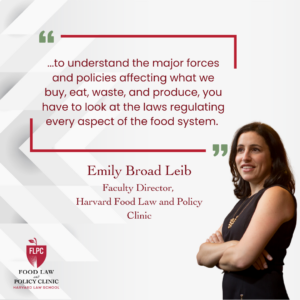Written by Natalia Szeremeta, Food Law and Policy Clinic intern and Boston University student.
 38 million – that’s how many additional people are suffering from hunger since 2016. Recently, the United Nations (UN) released a report entitled The State of Food Security and Nutrition in the World, which highlights how hunger, obesity and other nutrition-related issues have been increasing since 2016, and the factors that have contributed to these trends.
38 million – that’s how many additional people are suffering from hunger since 2016. Recently, the United Nations (UN) released a report entitled The State of Food Security and Nutrition in the World, which highlights how hunger, obesity and other nutrition-related issues have been increasing since 2016, and the factors that have contributed to these trends.
This report follows on the heels of the adoption of the 2030 Agenda for Sustainable Development, which promises an effort “to end poverty and hunger, in all their forms and dimensions, and to ensure that all human beings can fulfill their potential in dignity and equality and in a healthy environment.” The report is the first step toward reaching this goal by providing an assessment of the current global situation and the main issues that need to be addressed.
This report is also significant based on the greater collaboration among organizations. The United Nations Children’s Fund (UNICEF) and the World Health Organization (WHO) have joined the traditional partnership of the Food and Agriculture Organization (FAO), the International Fund for Agricultural Development (IFAD) and World Food Programme (WFP). This partnership indicates the adoption of a more holistic approach to documenting and studying world hunger and other troubling health and nutrition trends. The authors laud this joint effort as a “beginning of a new era in monitoring the progress made towards achieving a world without hunger and malnutrition.”
Yet, the breakthrough that this new partnership signifies, might not be enough to guarantee success, given the numerous and complex factors contributing to diet-related issues – e.g. climate change, economic slowdown, weather events, to reach the goal of ending hunger and malnutrition by 2030. As Paula Quatromini, an Associate Professor and Chair at the Department of Health Sciences at Boston University, expounds “These are huge problems of global proportions that demand policies, environmental interventions, and industry-level changes in order to address the life circumstances and environments that millions of people worldwide live in (…)”.
The magnitude of the problems that would need to be addressed is staggering. While 815 million people worldwide are affected by undernourishment, many more are facing other diet-related issues, such as obesity among adults and children under the age of five and anemia in women of reproductive age. The report acknowledges that reaching the zero-hunger threshold and ending malnutrition might not be feasible, especially in countries affected by conflict. These countries pose a uniquely difficult challenge due to the rampant food insecurity. Nevertheless, the idea that hunger can be eradicated in other non-affected areas is also unrealistic, given the data compiled by the United Nations report.
The State of Food Security and Nutrition in the World is a promising first step in the direction of documenting the most significant diet-related issues around the world and their root causes. However, the 2030 Agenda goals remain highly optimistic, and should be amended to focus on smaller and more feasible changes in very complicated and diverse food systems around the world. This could be done by adopting measures directed towards reducing food waste, supporting local agriculture, or providing food relief to countries affected by conflict.


Health Law & Policy, Commentary
Braidwood Management v. Becerra: Updated FAQs for Health Advocates and Providers
July 22, 2024